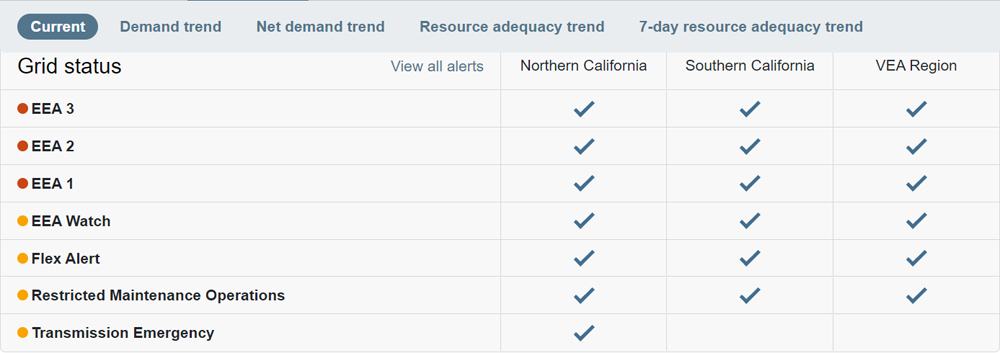
CAISO came dangerously close to calling for rolling blackouts Tuesday night but avoided issuing the final order to utilities thanks in part to a jarring alert sent out to millions of cell phones by the governor’s Office of Emergency Services.
A series of shrieking tones was followed by a text that said, “Conserve energy now to protect public health and safety. Extreme heat is straining the state energy grid. Power interruptions may occur unless you take action.”
The unusual alert was sent at 5:45 p.m. after CAISO declared an energy emergency alert 3. An EEA 3 means the ISO is “unable to meet minimum contingency reserve requirements and controlled power curtailments are imminent.”
CAISO CEO Elliot Mainzer summed up Tuesday’s near miss in a media briefing Wednesday, comparing it to a car running out of gas.
“We were well into the reserve tank of the car,” Mainzer said. “We were down to the last gallon there and dipping into our operating reserves. And we typically carry somewhere in the area of 3,000 to 4,000 MW of operating reserves, so we were very, very close to the bottom.”
Demand in CAISO hit a record high Tuesday of more than 52 GW as temperatures broke records across the state, including 116 degrees Fahrenheit in Sacramento, near CAISO’s headquarters.
 CAISO saw record demand Tuesday of more than 52 GW. | CAISO
CAISO saw record demand Tuesday of more than 52 GW. | CAISO
CAISO had ordered utilities to “arm” for load shed when a wave of consumer conservation following the cellphone alert narrowly averted blackouts. (A number of cities experienced outages because of a communications snafu with the Northern California Power Agency, CAISO said.)
Locational marginal prices throughout the state ranged between $1,700 and $2,300/MWh as the crisis continued, according to data posted on CAISO’s website.
The ISO called off the EEA 3 at 8 p.m., posting on Twitter: “Consumer conservation played a big part in protecting electric grid reliability. Thank you, California!”
The 3,500 MW of utility-scale 4-hour lithium-ion batteries installed since the state’s last rolling blackouts in August 2020 performed well and played a role in avoiding worse problems, Mainzer said.
Demand response from industrial users, and the ability to access emergency generation resources under an executive order from last year, played a part, as did more than 6,000 MW of imported hydroelectricity from the Pacific Northwest, CAISO said.
The crisis did not end Tuesday, however. The extraordinary heat wave gripping California is predicted to continue through Friday, with temperatures exceeding 100 F in greater Los Angeles, the San Francisco Bay Area and the inland Central Valley.
CAISO declared an EEA 2 on Wednesday afternoon, asking customers to turn up their thermostats and to postpone using large appliances such as clothes dryers and dishwashers.
Mainzer said the state would need consumers to continue conservation efforts, “hopefully for another reliable evening.”


